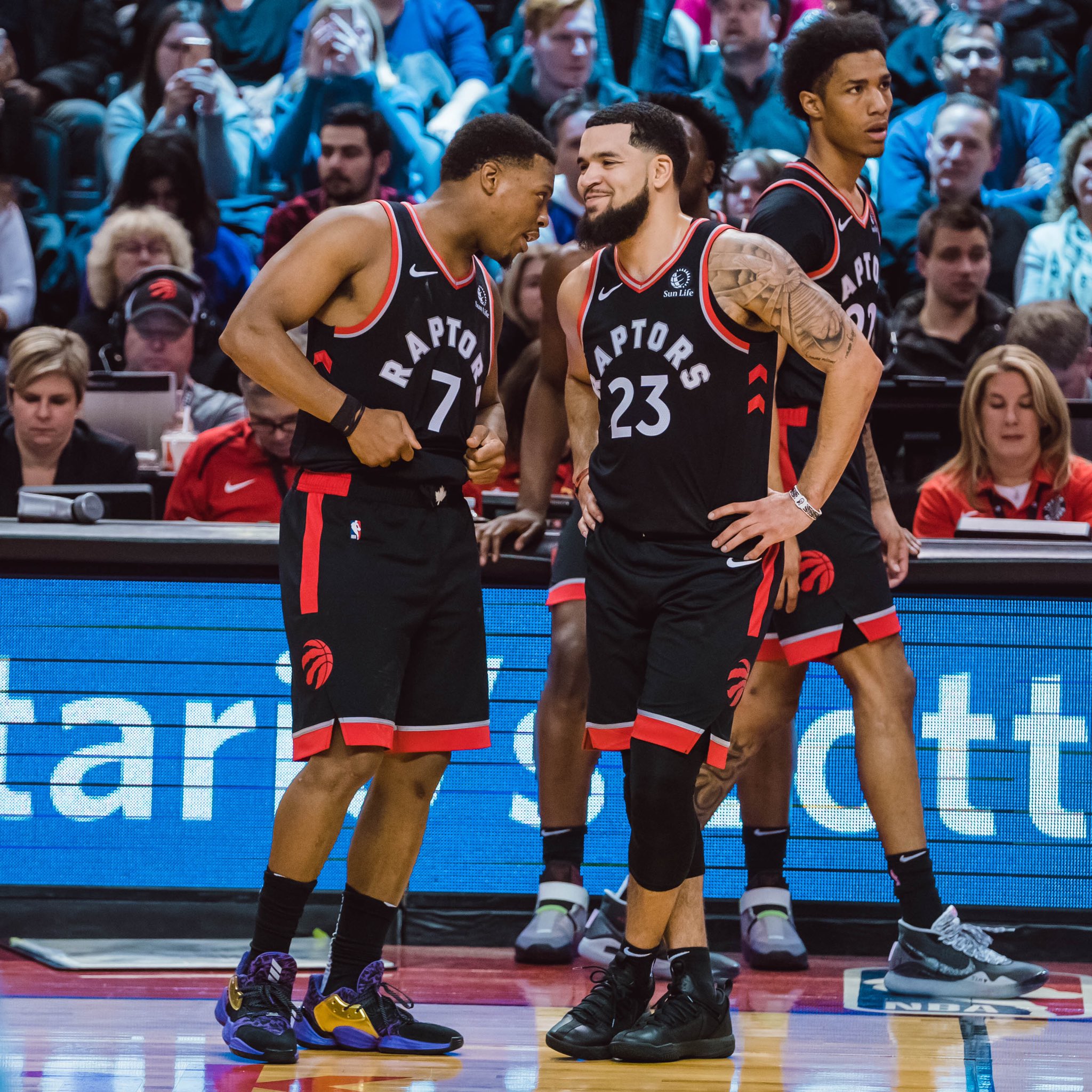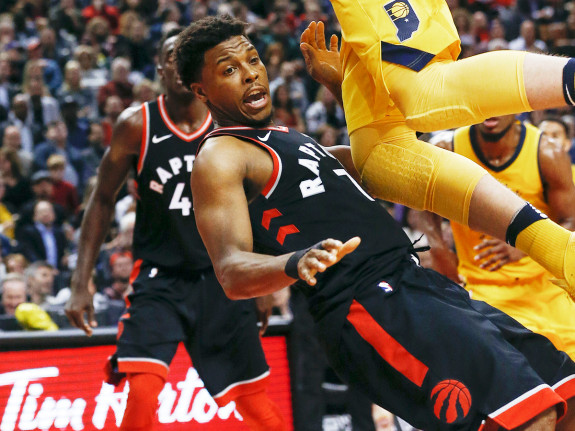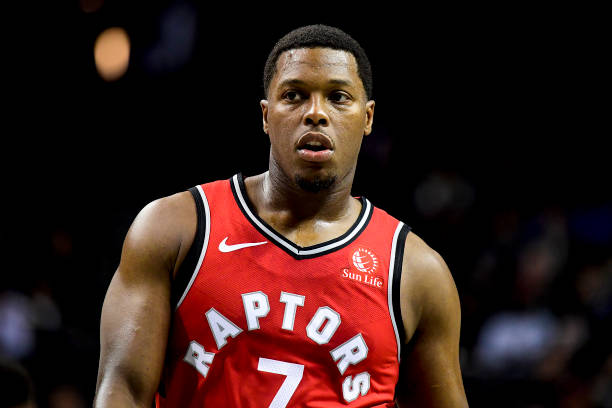WHAT A TIME, TO BE ALIVE!
Last week, the Raptors lost their best and most important player, their best big man and most important defender, and their best secondary scorer of the season. That didn’t stop them from going 4-0 — including a historic win against the Dallas Mavericks — improving their record to 21-8 and fourth place in the East.
But it only gets harder from here: this upcoming week was always going to represent a real challenge to a Raptors team that has struggled against elite competition all season, and it will be even tougher with such a thin roster.
Here is a breakdown of the Raptors upcoming schedule:
- Monday, December 23rd at 7:00pm: Toronto Raptors @ Indiana Pacers (20-10)
- Wednesday, December 25th at 12:00pm (Christmas): Boston Celtics (20-7) @ Toronto Raptors
- Saturday, December 28th at 7:00pm: Toronto Raptors @ Boston Celtics (20-7)
- Sunday, December 29th at 6:00pm: Oklahoma City Thunder (15-14) @ Toronto Raptors
- Combined winning percentage of 63.95
Let’s look ahead to the five most interesting storylines for the upcoming week:
1. Is help on the way?
While both Marc Gasol (hamstring) and Norman Powell (shoulder) are out for a matter of weeks, the same isn’t necessarily true for the rest of the Raptors injured players.
Pascal Siakam’s stretched groin looked bad when it happened, but Sportsnet’s Michael Grange is reporting that the Raptors are exercising caution for a mild strain. He could be back before we know it, and a Christmas game return would be ideal.
Plus, both Matt Thomas (finger) and Stanley Johnson (groin) have already been out for weeks, and although they weren’t getting a lot of minutes when healthy, the Raptors could use a sharpshooter and another big wing off the bench right now. Thomas is still likely two weeks away while Johnson was listed as doubtful for Sunday’s game against the Pacers, so he could be back soon.
Still no timeline on Thomas or Johnson. Nurse guessed Thomas is still at least two weeks away – has been doing a lot but can’t risk contact until the fracture is fully healed.
— Blake Murphy (@BlakeMurphyODC) December 20, 2019
As of now, the Raptors depth chart looks something like this:
PG: Kyle Lowry, Shamorie Ponds
SG: Patrick McCaw, Terence Davis
SF: OG Anunoby, Malcolm Miller
PF: Rondae Hollis-Jefferson, Oshae Brissett
C: Serge Ibaka, Chris Boucher, Dewan Hernandez
2. OG Anunoby (needs a nickname)
Usually, I like to use a player’s nickname in the subheading, but upon writing this, I realized that Anunoby has no nicknames. The closest thing is “OG, Oh My!” but that’s a saying, not a nickname. Too bad.
Anyways, Anunoby is perhaps the most interesting player for this upcoming stretch of games. The 22-year-old small forward actually struggled the last time the Raptors were shorthanded (without Lowry and Ibaka). His shot wasn’t falling and he wasn’t making great decisions with the ball. Plus, he wasn’t getting the ball in the greatest positions to succeed.
After starting the season hot, Anunoby averaged just 10.3 points on 49.4 percent shooting in 27.1 minutes in 11 games without Lowry, and his scoring has picked up since Lowry re-joined the lineup.
Coincidence? I say nay! While VanVleet is a starting-level point guard who runs a good two-man game and can take big men off the dribble, he often fails to get ALL of his teammates involved the same way Lowry consistently does. So, when VanVleet and Siakam took over the scoring load, Anunoby was unable to find his rhythm while Lowry was out of the lineup.
Anunoby is one of those guys who (like Ibaka) thrives playing next to Lowry, and he should regularly get the ball in good positions playing next to both Lowry and VanVleet this week. Not only will Anunoby be expected to score (hitting threes and attacking the basket), he will also be asked to do a fair bit of playmaking with Gasol out. Since Ibaka isn’t a strong playmaker, perhaps the Raptors will opt to run more of the offense through Anunoby on the strong side (instead of his regular place spotting up on the weak side). That way, Lowry and VanVleet can run pick-and-roll with Anunoby and rely on him to make the right reads. Anunoby’s usage rate of 15.4 ranks towards the bottom of the team and the Raptors should look to rely on him more as an offensive threat with such a thinned-out roster.
With so much scoring missing from the lineup, Anunoby will be asked to not only defend the opponent’s best perimeter player, but also pick up his scoring and playmaking. It’s a lot to ask from a 22-year-old playing out of position (Anunoby is starting at power forward with Siakam out), but it’s a great opportunity for Anunoby to prove to the coaching staff that he deserves a bigger role in the offense going forward.
3. Pace, steals, and turnovers
The Raptors are going to have to play a different style of basketball if they want to win after so many talented players went down. They aren’t going to win playing like they did in the first three quarters of the Mavericks game. They need to play more like they did in the fourth, which means playing with energy and aggressive defense, forcing turnovers, and playing in transition.
The reality is, as we saw against a good Mavericks defense on Sunday, the Raptors are going to have trouble scoring in the half-court with so many talented players missing. They no longer have the personnel to slow the game down, drain out the clock, and buy a bucket, because that often requires a Siakam isolation, and there is no longer a Siakam to isolate.
So, how do the Raptors score? In transition, a lot.
Don’t get me wrong, Lowry, VanVleet, Anunoby, and Ibaka can all score and sometimes even create their own shots, but along with Davis, Boucher, and Hollis-Jefferson, this team is full of guards who like to run and wings who are fast and athletic enough to finish in transition.
Plus, with Siakam missing, Lowry is now the best Raptor and it will be his job to run the offense, and we all know he likes to play fast.
The Raptors currently rank 13th in pace at 101.7 possessions per game, but they have played slightly faster in the past three games at 103.0 possessions per game. Still, they better ratchet that number up even further. The Raptors should look to run off opponent makes or misses, but the best way to create transition opportunities is by forcing turnovers. The Raptors might want to employ and even more aggressive defensive strategy (including some zone, traps (like the 2-2-1 against the Mavs) and regular double-teams) to force as many turnovers as possible in order to get out in transition and score that way. The Raptors already force turnovers on 15.7 percent of opponent possessions, good for 2nd in the league.
basketball nerd tweet incoming last chance to look away
Raptors had Boucher running top of 1-2-1-1 diamond full court press during comeback. You cant pass over or around this man. Too long and atheltic. Raptors can wreak havoc (yes VCU pun) on ANY team w/this, need to do it more
— Rob Perez (@WorldWideWob) December 22, 2019
The problem with playing so fast and relying on transition offense is that it often leads to turnovers. The tricky thing for the Raptors will be: how do we cause turnovers on one end, run as much as possible, but control the ball and not turn it over ourselves? So far this season, the Raptors turn over the ball on 14.2 percent of their offensive possessions, ranking 14th in the league.
Fortunately, Lowry and VanVleet are finally both healthy, which means Nick Nurse cause split up his two elite point guards so that one is on the floor at all times, allowing the Raptors to always have an elite ball-handler on the floor. Splitting up Lowry and VanVleet should enable the Raptors to limit their turnovers since they are so smart with the ball, but it will also be on secondary ball handlers McCaw, Davis, and Anunoby to prioritize limiting turnovers and making smart decisions.
So, in essence: run, but don’t be stupid.
4. Crash the glass
So, what happens when the Raptors are forced to play in the half-court? Again, we saw what succeeded in the fourth quarter against the Mavericks, which was hustle plays and second-chance opportunities.
The Raptors still have elite playmakers and good shooters, so expect plenty of the same offense you’re used to from the Raptors. Lowry and VanVleet (along with McCaw and Davis) will swing the ball back and forth as much as possible to get the defense to rotate, using picks from big men like Ibaka, Anunoby, Hollis-Jefferson, and Boucher. The basis of their offense will likely big pick-and-roll and pick-and-pops between guards and big men.
Expect a lot of three-pointers, since only Ibaka really shoots mid-rangers and the guards will have more trouble getting to the rim with diminished floor spacing. Also, expect some isolation game from Lowry, VanVleet, and Anunoby, all of whom have the ability to take slower defenders off the dribble and punish them, assuming the floor is spaced out well enough to give them a clear path to the rim.
However, good looks are still going to be hard to come by, and even when they come, the Raptors are missing four good shooters (if you include Thomas), so they are going to miss a lot of good looks. This is why Nurse should encourage his big men to crash the offensive glass for second-chance opportunities. It’s also why he should rely heavily on his bench big-men Hollis-Jefferson and Boucher.
Look, the Raptors need as many offensive opportunities as they can get, and they have four really athletic big men who play hard and get out-work opposing big men for second-chance opportunities. Anunoby, Ibaka, Hollis-Jefferson, and Boucher can all get up there, and the two big men off the bench are actually really good offensive-rebounders: Hollis Jefferson is averaging 4.3 offensive rebounds per 36 minutes and Boucher is averaging 5.7 per 36. Aside from Lowry, those two were the biggest reason the Raptors came back against the Mavs, and Nurse actually should have gone to his bench sooner than he did.
The Raptors aren’t going to have more talent than the Pacers or the Celtics with this roster, so they need to win by committee and by playing a style that suits their thinned-out roster. They need to play fast, force turnovers, limit their own turnovers, and win the rebounding battle in order to give themselves more shots and more opportunities to score.
If they can do those things, they will have a chance. And don’t call it a Christmas miracle.
5. Lowry-time
We learned a lot about Kyle Lowry last season. Namely, that he is best positioned as a primary facilitator and secondary scorer. In the past, Lowry had been miscast in a role that relied on him to put up big numbers each and every night, and when his shot wasn’t falling, the Raptors weren’t winning.
The Kawhi Leonard trade, along with Pascal Siakam’s ascendance, allowed Lowry to take a backseat as a scorer, averaging 14.2 points per game, his lowest since the 2012-13 season. Meanwhile, Lowry’s assist totals rose to 8.7 per game, a career-high. It seemed like the perfect role for Lowry, a pass-first point guard who is an elite catch-and-shoot threat and inconsistent when it comes to creating his own shot, and someone in his early thirties who needs to save energy for the defensive side of the floor.
Just don’t tell Lowry that.
After coming back from a hand injury that kept him out 11 games, Lowry took his time to find his rhythm again. In the last five games, however, Lowry has carried the Raptors to a five-game winning streak playing some of the best basketball of his career averaging 23/9/6 on 39.0 percent shooting from three and +8.2.
He (almost) single-handedly brought the Raptors back from a franchise-record 30-point deficit against the Mavericks in what will go down as a career-defining moment for the franchise point guard.
Over that same stretch, Lowry is averaging 39.5 minutes per game, which is alarming for a 33-year-old point guard with a long history of injuries, but it’s not like Nurse has much of a choice.
With such a thin roster, Nurse has to play Lowry a lot and he needs to rely on him to be a scoring threat every night. That’s a tall order for someone who also runs the offense from a facilitating perspective and has a tough defensive assignment every night.
But Lowry is the face of the franchise. It comes with the territory.




